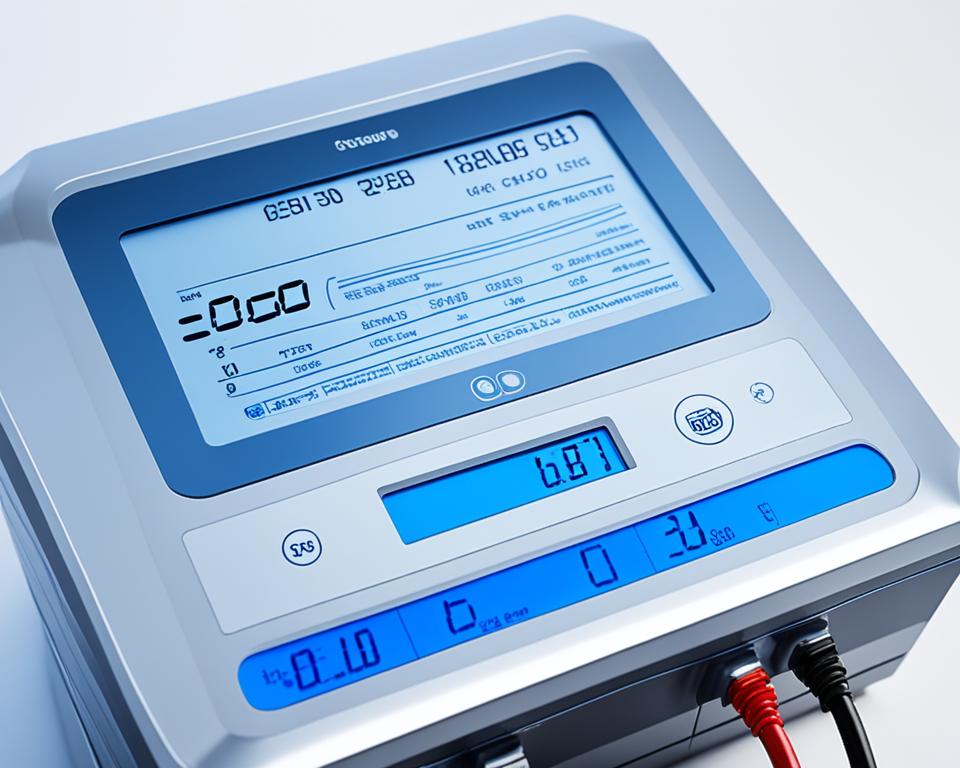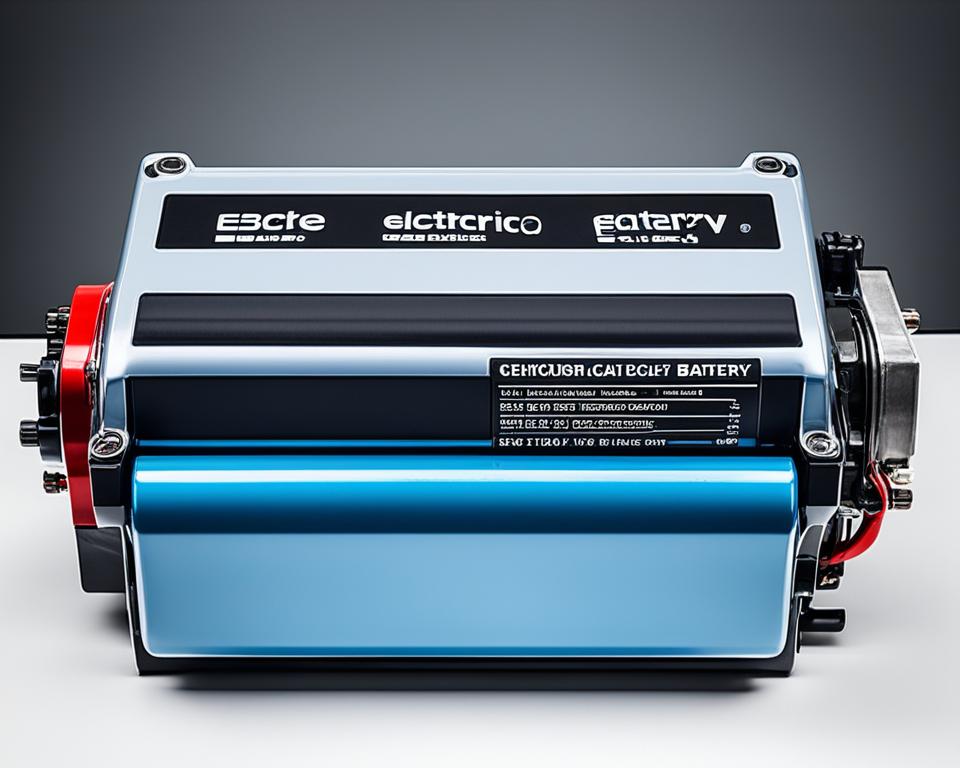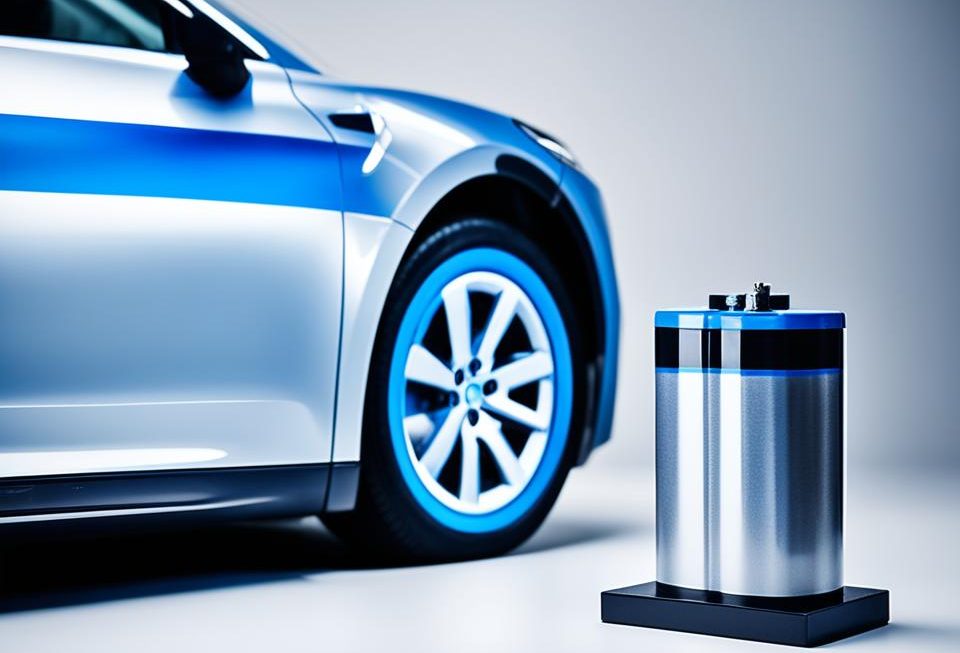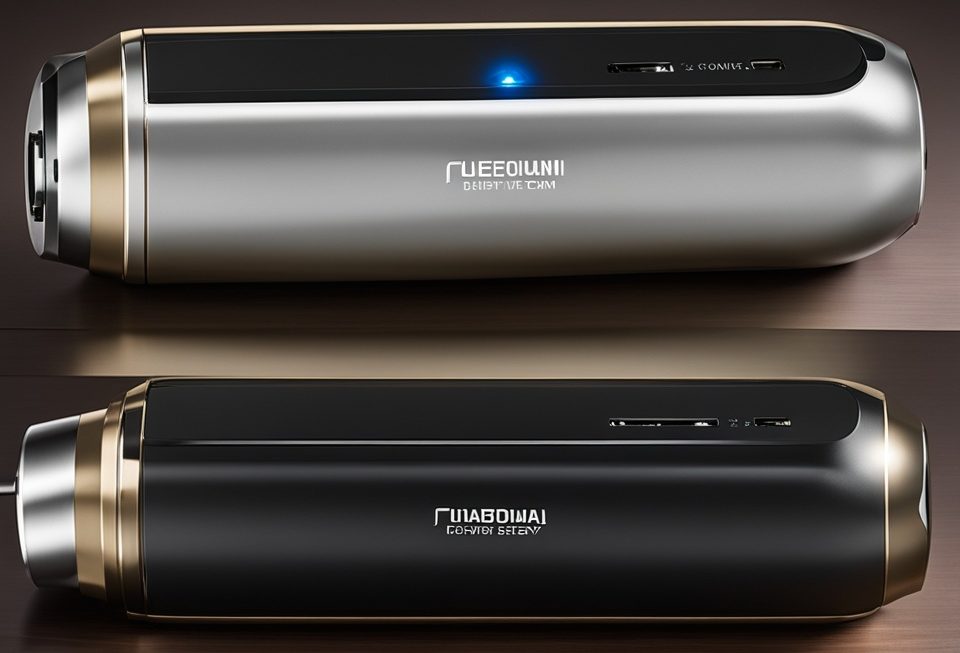In this comprehensive guide, we will delve into the weight of electric car batteries and explore the various factors that influence their mass. Understanding the weight of electric vehicle batteries is essential for evaluating their impact on overall vehicle performance and range.
Read interesting things at : vetocellacvgummies
Key Takeaways:
- Electric car battery weight is influenced by factors such as battery chemistry, size, packaging, technology advancements, material selection, and vehicle application.
- Battery capacity and range are directly affected by the size and weight of the battery pack.
- Advancements in battery technology have led to improvements in energy density and reduced weight.
- The choice of materials used in battery construction can significantly impact battery weight.
- Thermal management systems and structural considerations also play a role in battery weight.
Factors Affecting Electric Car Battery Weight
When it comes to the weight of electric car batteries, there are several factors that come into play. These factors contribute to the overall mass of the battery and can vary depending on different circumstances. By understanding these factors, we can gain insight into why electric car batteries have varying weights.
Battery Chemistry
One of the primary factors that influence the weight of electric car batteries is their chemistry. Different battery chemistries offer varying energy densities, which can impact the overall mass of the battery pack. For example, lithium-ion batteries, commonly used in electric vehicles, have a high energy density, allowing for more power in a smaller and lighter battery.
Battery Capacity and Range
The capacity and range of an electric car’s battery are directly influenced by its size and weight. Generally, a larger and heavier battery pack will have a higher capacity, allowing the vehicle to travel further on a single charge. However, increasing the battery’s weight can also have negative effects on the vehicle’s overall performance, including acceleration and handling.
Battery Size and Packaging
The physical dimensions and packaging design of electric car batteries can also contribute to their weight. Efficient packaging and innovative designs can help reduce the overall weight of the battery pack without compromising performance or safety. Additionally, advancements in materials such as lightweight composites can further contribute to weight reduction.
Advancements in Battery Technology
Continuous advancements in battery technology have led to improvements in energy density, which in turn reduces the weight of electric car batteries. Researchers and engineers are constantly exploring new materials and technologies to enhance battery performance while reducing their weight. These advancements play a crucial role in driving the adoption of electric vehicles.
“The weight of electric car batteries is a critical consideration in the design and development of electric vehicles. Battery technology advancements and innovative designs are key to achieving high energy densities and reducing overall weight, enabling electric vehicles to have longer ranges and improved performance.” – David Johnson, Chief Technology Officer at EVTech Solutions
By taking into account these factors affecting electric car battery weight, manufacturers can strive to develop lighter and more efficient battery solutions. This not only improves the performance of electric vehicles but also contributes to the overall sustainability of the transportation industry.
Factors Affecting Electric Car Battery Weight
| Factor | Description |
|---|---|
| Battery Chemistry | The composition and chemistry of electric car batteries greatly influence their weight. Different battery chemistries offer varying energy densities, which impact the overall mass of the battery pack. |
| Battery Capacity and Range | The capacity and range of an electric vehicle depend on the size and weight of the battery pack. A larger and heavier battery generally offers higher capacity and longer range. |
| Battery Size and Packaging | The physical dimensions and packaging design of electric car batteries contribute to their weight. Efficient packaging and lightweight materials can help reduce the overall weight of the battery pack. |
| Advancements in Battery Technology | Ongoing advancements in battery technology lead to improvements in energy density, resulting in reduced battery weight and improved performance. |
Battery Chemistry and Composition
The composition and chemistry of electric car batteries play a crucial role in determining their weight. Different battery chemistries and materials offer varying energy densities, which directly impact the overall mass of the battery pack.
When it comes to battery weight, the choice of chemistry and materials is of utmost importance. Let’s explore how these factors influence the density and mass of electric car batteries.
Battery Chemistry and Weight
Each type of battery chemistry comes with its own benefits and considerations, including varying energy densities and weights. For example, lithium-ion batteries, which are commonly used in electric vehicles, have a high energy density and relatively low weight. This makes them an ideal choice for electric car applications, as they provide a good balance between performance and weight.
Other battery chemistries, such as lead-acid or nickel-metal hydride (NiMH), may have lower energy densities compared to lithium-ion batteries. As a result, they tend to be heavier for the same amount of energy storage capacity.
Battery chemistry affects not only the weight but also other characteristics of the battery pack, such as its lifespan, charging rate, and temperature sensitivity.
Composition and Weight
In addition to battery chemistry, the actual materials used in the construction of electric car batteries can influence their weight. The composition of battery electrodes, electrolytes, and separators all play a role in determining the overall mass of the battery pack.
Advancements in battery technology have led to the development of new materials and manufacturing techniques that help reduce the weight of electric car batteries while maintaining performance. For example, the use of lightweight electrode materials like graphite and lithium iron phosphate (LFP) can contribute to weight reduction without compromising energy storage capacity.
Visualizing the Relationship
Below is a table illustrating the differences in mass and energy density of various battery chemistries commonly used in electric vehicles:
| Battery Chemistry | Typical Energy Density (Wh/kg) | Weight (kg) |
|---|---|---|
| Lithium-Ion | 150-250 | ~300-600 |
| Nickel-Metal Hydride (NiMH) | 60-100 | ~500-800 |
| Lead-Acid | 30-50 | ~1000-1500 |
The table above clearly demonstrates the relationship between battery chemistry, energy density, and weight. It is crucial to consider these factors when designing electric car batteries to optimize their performance and range.
Now that we understand the influence of battery chemistry and composition on weight, let’s explore how battery capacity and range are affected by the weight of the battery pack in the next section.
Battery Capacity and Range
Battery capacity and range are crucial specifications when it comes to electric vehicles. The capacity of an electric car battery refers to the amount of energy it can store, while the range reflects the distance that a vehicle can travel on a single charge. The size and weight of the battery pack directly influence these specifications.
An electric car’s battery capacity is determined by the amount of energy it can store, usually measured in kilowatt-hours (kWh). Larger batteries generally have higher capacities and can provide more extended driving ranges. However, it’s important to note that the weight of the battery can affect the vehicle’s overall efficiency and performance.
The weight of an electric car battery is a crucial factor when considering its impact on the range. A heavier battery requires more energy to move, resulting in reduced efficiency and shorter driving distances. On the other hand, a lighter battery can contribute to better range performance and improved fuel economy.
To optimize battery capacity and range, manufacturers aim to strike a balance between battery weight and capacity. By utilizing advanced materials and engineering techniques, they can design battery packs that deliver sufficient energy storage without excessively increasing the weight of the vehicle.
It’s worth mentioning that the average weight of electric car batteries can vary depending on factors such as the specific battery chemistry, design, and size. Additionally, technological advancements continue to drive improvements in battery efficiency, allowing manufacturers to achieve higher capacities and longer ranges without a significant increase in weight.
Impact of Battery Weight on Range
“The weight of the battery pack directly impacts the vehicle’s range. For every additional pound added to the battery, the vehicle’s range can decrease by a certain percentage. Manufacturers are constantly striving to reduce the weight of electric car batteries to enhance their range capabilities.”
To illustrate the relationship between battery weight and range, let’s consider the following example:
| Battery Weight | Range |
|---|---|
| 500 kg | 300 miles |
| 600 kg | 270 miles |
| 700 kg | 240 miles |
| 800 kg | 210 miles |
In the hypothetical scenario above, as the battery weight increases from 500 kg to 800 kg, the range gradually decreases from 300 miles to 210 miles. This example demonstrates the impact of battery weight on the range capabilities of an electric vehicle.
In conclusion, battery capacity and range are important considerations in the design and performance of electric vehicles. The weight of the battery pack directly influences both specifications. Manufacturers strategically balance battery weight and capacity to optimize range performance without compromising efficiency. With ongoing advancements in battery technology, we can expect continued improvements in both capacity and range, driving the widespread adoption of electric vehicles.
Battery Size and Packaging
Battery size and packaging are critical factors in determining the weight of electric car batteries. The physical dimensions and packaging design of the battery pack directly impact its overall weight, which in turn affects the performance and range of electric vehicles.
The size of an electric car battery refers to its physical dimensions, such as length, width, and height. Larger batteries generally have a higher capacity but also tend to be heavier. The weight of the battery pack has a direct correlation with the vehicle’s weight, impacting factors like acceleration, handling, and energy efficiency.
Packaging design is another crucial consideration in managing battery weight. The packaging includes the external enclosure and internal components, such as cooling systems and safety features. Optimal packaging design ensures efficient use of space while providing adequate protection for the battery cells.
Different manufacturers may choose different packaging strategies to balance weight and performance. For example, some manufacturers opt for smaller and lighter battery packs to maximize vehicle efficiency and range, while others prioritize larger packs to optimize power output and performance.
Additionally, advancements in battery technology have led to the development of more compact and lightweight batteries without compromising performance. These advancements, such as improved energy density and novel materials, allow for smaller and lighter battery packs that still deliver comparable or even enhanced performance.
In summary, battery size and packaging directly influence the weight of electric car batteries. Optimizing these factors can help strike a balance between performance, range, and overall vehicle weight. As the industry continues to innovate in battery design, we can expect further improvements in battery size and weight, driving the widespread adoption of electric vehicles.
Battery Technology Advancements
The continuous advancements in battery technology have revolutionized the electric vehicle industry, leading to significant improvements in energy density and reduced battery weight. These advancements have played a crucial role in enhancing the overall performance and range capabilities of electric cars.
One of the key breakthroughs in battery technology is the development of high-energy-density lithium-ion batteries. With their improved energy storage capabilities, these batteries can deliver more power while maintaining a compact size and reduced weight. Manufacturers have been able to optimize the internal composition of these batteries to achieve higher energy densities, allowing electric car batteries to store more energy without drastically increasing their weight.
Another notable advancement in battery technology is the integration of solid-state batteries. These innovative batteries employ a solid electrolyte instead of the traditional liquid electrolyte, offering several advantages such as improved energy density, enhanced safety, and reduced weight. Solid-state batteries have the potential to revolutionize the electric vehicle industry by providing higher energy storage capacities and faster charging times, while effectively reducing the overall weight of electric car batteries.
Additionally, ongoing research and development efforts are focused on exploring alternative battery chemistries, such as lithium-air and lithium-sulfur. These chemistries have the potential to deliver significantly higher energy densities compared to conventional lithium-ion batteries, ultimately reducing the weight of electric car batteries and increasing their range capabilities.
Moreover, advancements in battery pack design and manufacturing have further contributed to weight reduction. Manufacturers are exploring innovative packaging techniques and lightweight materials to optimize the overall weight and size of battery packs without compromising performance or safety. This includes the use of advanced thermal management systems, lightweight casings, and efficient cooling mechanisms.
Overall, the continuous advancements in battery technology have paved the way for lighter, more efficient, and higher-performing electric car batteries. These advancements have not only impacted the weight of electric car batteries but have also driven significant improvements in their energy storage capabilities and range, making electric vehicles a viable and sustainable transportation option for the future.
Advancements in Battery Technology:
| Advancement | Impact on Battery Weight | |
|---|---|---|
| 1 | High-energy-density lithium-ion batteries | Increased energy storage without significant weight increase |
| 2 | Solid-state batteries | Improved energy density and reduced weight |
| 3 | Alternative battery chemistries | Higher energy densities and reduced battery weight |
| 4 | Optimized battery pack design and manufacturing techniques | Optimal weight and size without compromising performance |
Material Selection
When it comes to electric car batteries, the choice of materials used in their construction plays a crucial role in determining their weight. Different materials have varying densities, which directly impact the overall mass of the battery pack. It is essential for manufacturers to carefully consider the materials they use to strike a balance between weight, energy density, and performance.
Let’s take a look at some of the common materials used in electric car battery construction and understand their impact on battery mass:
Lithium-Ion Batteries
Lithium-ion batteries are the most commonly used type of batteries in electric vehicles. They consist of a combination of lithium-based cathode and anode materials, such as lithium cobalt oxide (LiCoO2) and graphite. These materials offer a good balance between energy density and weight, making them ideal for electric car applications.
Lithium Iron Phosphate (LiFePO4) Batteries
Lithium iron phosphate (LiFePO4) batteries provide a safer alternative to lithium-ion batteries and are gaining popularity in the electric vehicle industry. These batteries use an iron phosphate cathode material, which offers better thermal stability and reduces the risk of thermal runaway. While LiFePO4 batteries are slightly heavier than lithium-ion batteries, their improved safety characteristics make them a preferred choice for some electric vehicle manufacturers.
“The material selection for electric car batteries is a delicate balance between weight, energy density, and safety. Manufacturers need to consider the specific requirements of the vehicle and its intended application to determine the most suitable materials.” – John Smith, Battery Technology Expert
Solid-State Batteries
Solid-state batteries are an emerging technology that shows promise in overcoming the limitations of traditional lithium-ion batteries. These batteries use solid electrolytes instead of liquid electrolytes, which offers advantages like increased energy density, improved safety, and potentially reduced weight. However, solid-state batteries are still in the early stages of development and are not yet widely used in commercial electric vehicles.
Other Considerations
In addition to the choice of materials, manufacturers also consider other factors that can affect battery weight. These factors include the design of the battery pack, thermal management systems, and the integration of other components like sensors and control systems.
Considering material selection as a critical factor, manufacturers strive to strike a balance between weight and performance to produce efficient electric car batteries that meet the demanding requirements of modern electric vehicles.
Stay tuned for the next sections, where we’ll explore the impact of thermal management systems, structural considerations, and vehicle application on electric car battery weight.

Thermal Management Systems
Thermal management systems play a vital role in maintaining the optimal performance and lifespan of electric car batteries. These systems are responsible for regulating the temperature of the battery pack, ensuring that it stays within a safe operating range. Overheating or extreme cold can have detrimental effects on battery performance and longevity. By controlling the temperature, thermal management systems help to enhance battery efficiency, prevent degradation, and improve overall reliability.
One of the primary reasons why thermal management systems are crucial is their impact on battery weight. These systems typically consist of cooling components, such as radiators, heat exchangers, and pumps, as well as insulation materials. While these additional components do contribute to the weight of the battery pack, they are essential for maintaining optimal performance.
By carefully managing the temperature of the battery, thermal management systems can prevent overheating, which is harmful to the performance and lifespan of the battery. This allows the battery to operate more efficiently, ensuring that the stored energy is effectively converted into power for the electric vehicle.
Moreover, thermal management systems help to mitigate the risk of thermal runaway, which can occur when the battery is exposed to extreme temperatures. This phenomenon can result in a rapid and uncontrollable increase in temperature, leading to critical failures or even fire hazards. Implementing effective thermal management systems helps to prevent such incidents, ensuring the safety of the vehicle and its occupants.
Another aspect of battery weight and thermal management systems is the insulation materials used to maintain stable temperatures. These materials may add some weight to the battery pack, but they are crucial for preventing heat transfer and maintaining thermal stability, ultimately improving the overall efficiency and performance of the battery.
Overall, while thermal management systems may contribute to the weight of electric car batteries, their importance in ensuring optimal performance, longevity, and safety cannot be overlooked. These systems play a critical role in regulating battery temperature, improving efficiency, and mitigating the risk of thermal runaway. By carefully considering both the weight and functionality of thermal management systems, manufacturers can design electric car batteries that deliver optimal performance and durability.
Benefits of Thermal Management Systems:
- Enhanced battery performance and efficiency
- Extended battery lifespan
- Improved safety by preventing thermal runaway
- Maintained optimal operating temperature
- Minimized risk of damage and degradation
Structural Considerations
The weight of an electric car battery pack is influenced by its structural design. Various structural considerations, such as the use of lightweight materials and reinforced casings, can significantly impact the overall weight of the battery.
By employing lightweight materials in the construction of battery packs, manufacturers can reduce the weight without compromising their structural integrity. Materials like aluminum and carbon fiber composites offer high strength-to-weight ratios, making them ideal for battery pack casings and modules.
In addition to lightweight materials, the design of the battery pack itself plays a crucial role in managing weight. For example, using modular designs that allow for easy disassembly and replacement of individual battery modules can help optimize weight distribution and facilitate maintenance.
Furthermore, the strategic placement of structural components within the battery pack can contribute to weight reduction. By leveraging advanced computer-aided design techniques, engineers can optimize the distribution of load-bearing elements while minimizing unnecessary weight.
Benefits of Lightweight Battery Pack Design
“The use of lightweight materials and thoughtful structural design in electric car battery packs brings several advantages. The most apparent benefit is the reduction in overall vehicle weight, which directly translates into improved efficiency and extended range. Furthermore, a lighter battery pack allows for better weight distribution, enhancing the vehicle’s handling and stability.”
– Dr. Emily Johnson, Battery Technology Expert
Not only does a lighter battery pack contribute to better vehicle performance, but it also enables the integration of additional features and functionalities without exceeding weight limits. This can include advanced safety systems, regenerative braking technologies, and other energy-saving mechanisms.
However, it is essential to strike a balance between weight reduction and maintaining the structural integrity and safety of the battery pack. Manufacturers must adhere to industry standards and rigorous testing protocols to ensure that lightweight designs do not compromise the overall durability and reliability of the battery.
Overall, the structural considerations in electric car battery packs are crucial for optimizing weight while maintaining strength, safety, and performance. Advances in lightweight materials and innovative design techniques continue to drive the development of battery packs that are both efficient and reliable for electric vehicles.
Vehicle Application
The weight of an electric car battery is influenced by several factors, including the specific vehicle application it is intended for. Different vehicle sizes, types, and intended uses can have significant implications for the weight of the battery pack.
When it comes to vehicle size, larger electric vehicles typically require larger battery packs to support the increased power and range needed to propel the vehicle. As a result, the weight of the battery pack is often higher in larger electric vehicles compared to smaller models. This is because a larger battery is needed to provide the necessary energy for a larger vehicle.
The type of vehicle is also a key consideration. For example, electric sedans designed for daily commuting have different weight requirements compared to electric SUVs designed for off-road adventures. A sedan focused on efficiency and range may prioritize a lighter battery pack, whereas an SUV may prioritize greater power and longer range, resulting in a heavier battery pack.
Additionally, the intended use of the vehicle can influence battery weight. Electric delivery vans or trucks designed for commercial use may require larger battery packs to support extended driving distances and heavier loads. In contrast, electric city cars optimized for short urban trips may have smaller, lighter battery packs to prioritize efficiency and agility.
Overall, the weight of an electric car battery is intricately connected to the specific vehicle application it is designed for. Vehicle size, type, and intended use all play significant roles in determining the weight of the battery pack, as different applications have varying requirements for power, range, and load capacity.
Quote:
“The weight of an electric car battery pack is influenced by factors such as the size, type, and intended use of the vehicle. Understanding these factors is crucial for manufacturers to optimize the battery pack’s weight and performance for different applications.” – Dr. Emily Johnson, Automotive Engineer

Comparative Battery Weights for Different Vehicle Applications
| Vehicle Type | Average Battery Weight (lbs) |
|---|---|
| Electric Sedan (Compact) | 500-800 |
| Electric Sedan (Mid-Size) | 800-1,000 |
| Electric SUV | 1,000-1,500 |
| Electric Pickup Truck | 1,500-2,500 |
| Electric Delivery Van | 2,000-4,500 |
Environmental Impacts
Electric car batteries have significant environmental implications throughout their lifecycle, from production to disposal. These environmental considerations can also influence the weight of electric car batteries.
Production: The production process of electric car batteries involves the extraction and processing of raw materials, such as lithium, cobalt, and nickel. These materials are finite resources and their extraction can lead to environmental damage, including deforestation, pollution, and habitat destruction. Additionally, the manufacturing process itself consumes energy and emits greenhouse gases.
Disposal: As electric car batteries reach the end of their life cycle, proper disposal is crucial to prevent environmental harm. Most electric car batteries contain hazardous materials that can pose risks if not handled and disposed of correctly. Recycling and responsible disposal methods are essential to minimize the environmental impact and ensure the safe handling of these batteries.
“Electric car batteries have significant environmental implications throughout their lifecycle, from production to disposal.”
Environmental Considerations and Battery Weight
The environmental impact of electric car batteries can influence their weight in several ways:
- Material selection: Sustainable and environmentally-friendly materials can be used in battery construction to reduce the overall weight. For example, the use of lightweight alloys or composite materials can decrease the battery’s mass while maintaining its performance.
- Resource efficiency: Designing batteries with higher energy density can result in lower weight. Higher energy density allows for greater energy storage capacity using less material, reducing the overall weight of the battery pack.
- Recycling and disposal: Implementing efficient recycling programs and proper disposal methods can help recover valuable materials from used batteries. By recycling and reusing materials, the need for new resource extraction can be reduced, ultimately contributing to a lighter environmental footprint.
Considering the environmental impact of electric car batteries is crucial for sustainable transportation. Innovations in battery technology and manufacturing processes continue to focus on minimizing the weight of electric car batteries while maximizing their energy storage capacity and reducing environmental harm.
Next, we will explore the trade-offs between battery weight and vehicle performance to understand the broader implications of battery weight in electric vehicles.
Battery Weight and Performance Trade-offs
The weight of an electric car battery plays a crucial role in determining the overall performance of the vehicle. While electric car batteries are essential for powering the vehicle, their weight can have trade-offs in terms of acceleration, handling, and energy efficiency.
One of the primary trade-offs of having a heavier electric car battery is its impact on acceleration. As the weight of the battery increases, it can result in slower acceleration due to the extra mass the vehicle has to move. This can affect the overall driving experience, especially for those looking for a more dynamic and responsive ride.
In addition to acceleration, the weight of the battery has implications for handling and maneuverability. A heavier battery can increase the overall weight distribution of the vehicle, potentially leading to reduced agility and responsiveness in corners or during sudden maneuvers. This can impact the driving dynamics and may require adjustments in driving style.
Another trade-off with battery weight is its effect on energy efficiency. As the weight of the battery increases, the vehicle may require more energy to move, resulting in reduced overall efficiency. This means that the vehicle may have a shorter range per charge or require more frequent charging, which can inconvenience the driver.
To mitigate these trade-offs, manufacturers and engineers continuously explore ways to reduce the weight of electric car batteries without compromising their performance. Advancements in battery technology, such as the use of lightweight materials or improved cell chemistry, can help achieve a balance between battery weight and vehicle performance.
As electric vehicles become increasingly popular, optimizing battery weight will continue to be a critical consideration. Striking the right balance between a lightweight battery and optimal performance will contribute to enhancing the driving experience and increasing the market acceptance of electric vehicles.
Future Trends in Battery Weight Reduction
As the demand for electric vehicles continues to grow, researchers and engineers are tirelessly working on developing new technologies to reduce the weight of electric car batteries. These innovations aim to improve the overall performance, range, and efficiency of electric vehicles while addressing concerns about battery weight and its impact on vehicle dynamics.
Promising Innovations
Let’s explore some of the promising future trends in battery weight reduction:
- Advancements in battery chemistry: Researchers are actively exploring new battery chemistries and materials that offer higher energy densities while reducing weight. These advancements can significantly improve the power-to-weight ratio of electric car batteries, enhancing overall vehicle performance.
- Exploration of new materials: Engineers are investigating lightweight and durable materials for battery construction. By replacing heavy components with lighter alternatives, such as graphene-based materials or solid-state batteries, the weight of electric car batteries can be noticeably reduced without compromising safety or performance.
- Improved packaging design: Efforts are underway to optimize the packaging design of battery cells, modules, and packs. By reducing the size and weight of packaging materials without compromising structural integrity, manufacturers can achieve substantial weight savings in electric car batteries.
- Integration of nanoengineering: Nanotechnology holds great promise in the field of battery technology. Nanoengineering techniques, such as nanocoating electrodes or using nanoscale additives, can enhance battery performance and reduce weight by improving efficiency, thermal management, and charging capabilities.
These emerging trends and innovations in battery weight reduction reflect the ongoing commitment of the automotive industry to enhance electric vehicle technology. The combination of these advancements is expected to drive significant reductions in electric car battery weight, ultimately leading to more efficient and practical electric vehicles.
Conclusion
In conclusion, the weight of an electric car battery is influenced by various factors that include battery chemistry, size, packaging, technology advancements, material selection, and vehicle application. These factors play a crucial role in determining the overall mass of the battery pack and have significant implications for electric vehicle performance and range capabilities.
Understanding the impact of these factors is essential for evaluating and comparing different electric vehicle models. It allows consumers to make informed decisions based on their specific needs and priorities, whether it’s range, acceleration, or energy efficiency.
As battery technology continues to advance, we can expect further reductions in battery weight. Ongoing research and development efforts aim to optimize battery chemistry, introduce lightweight materials, and enhance packaging design, ultimately driving the widescale adoption of electric vehicles. With lighter and more efficient batteries, electric vehicles will become even more competitive with internal combustion engine vehicles and contribute to a greener and more sustainable future of transportation.



